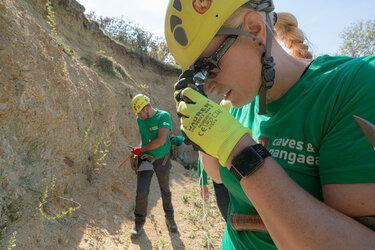

Science & Exploration
Pangaea expedition to Montaña Blanca
Pangaea trainees reach the top of the crater Montaña Blanca in Lanzarote, Spain. The main focus of the third session of Pangaea is volcanism.
ESA’s Pangaea training course prepares astronauts and space engineers to identify planetary geological features for future missions to the Moon, Mars and asteroids. Leading European planetary geologists share their insights into the geology of the Solar System.
Through Pangaea, Europe is developing operational concepts for surface missions where astronauts and robots work together, among themselves and with scientists and engineers on Earth, using the best field geology and planetary observation techniques.





